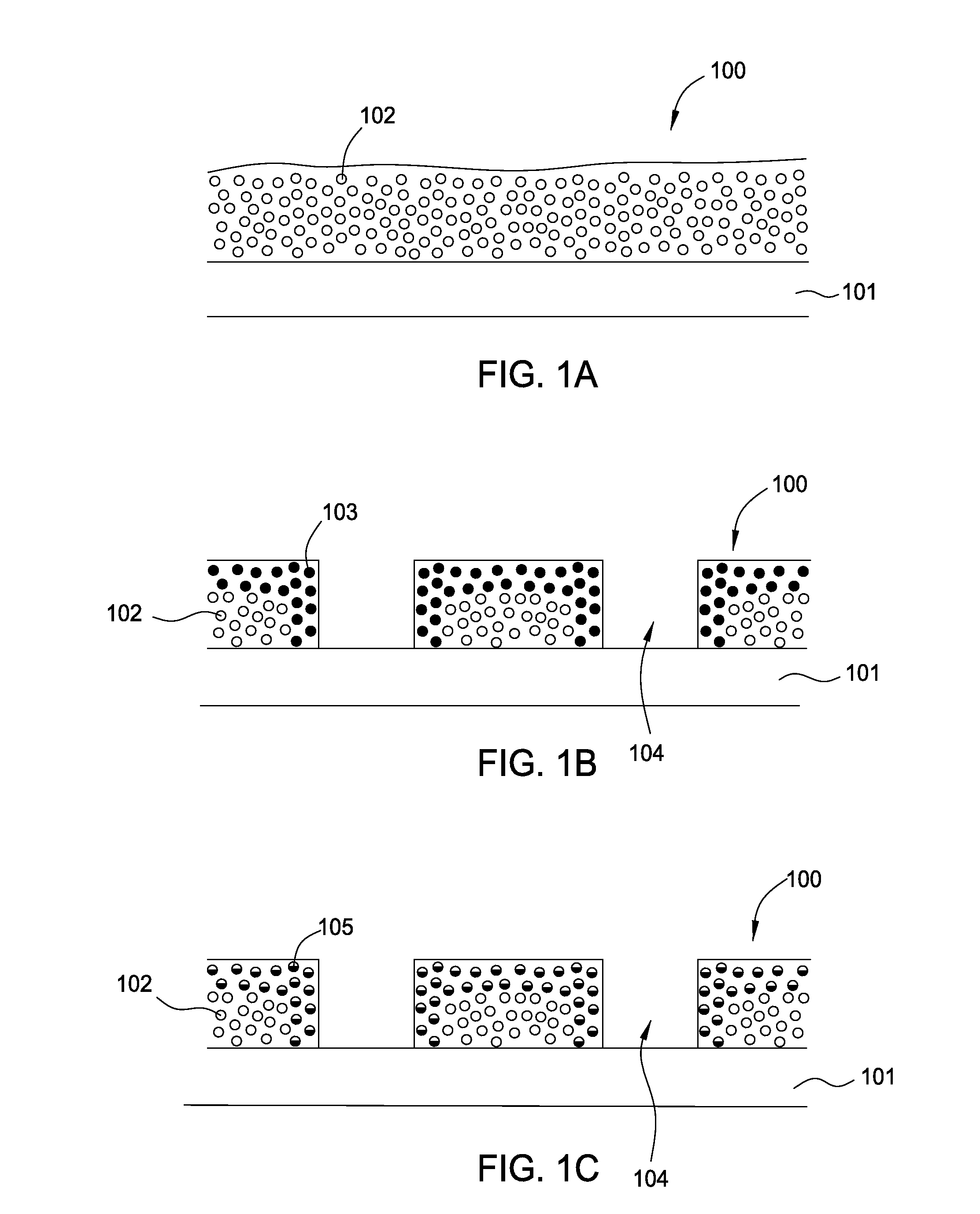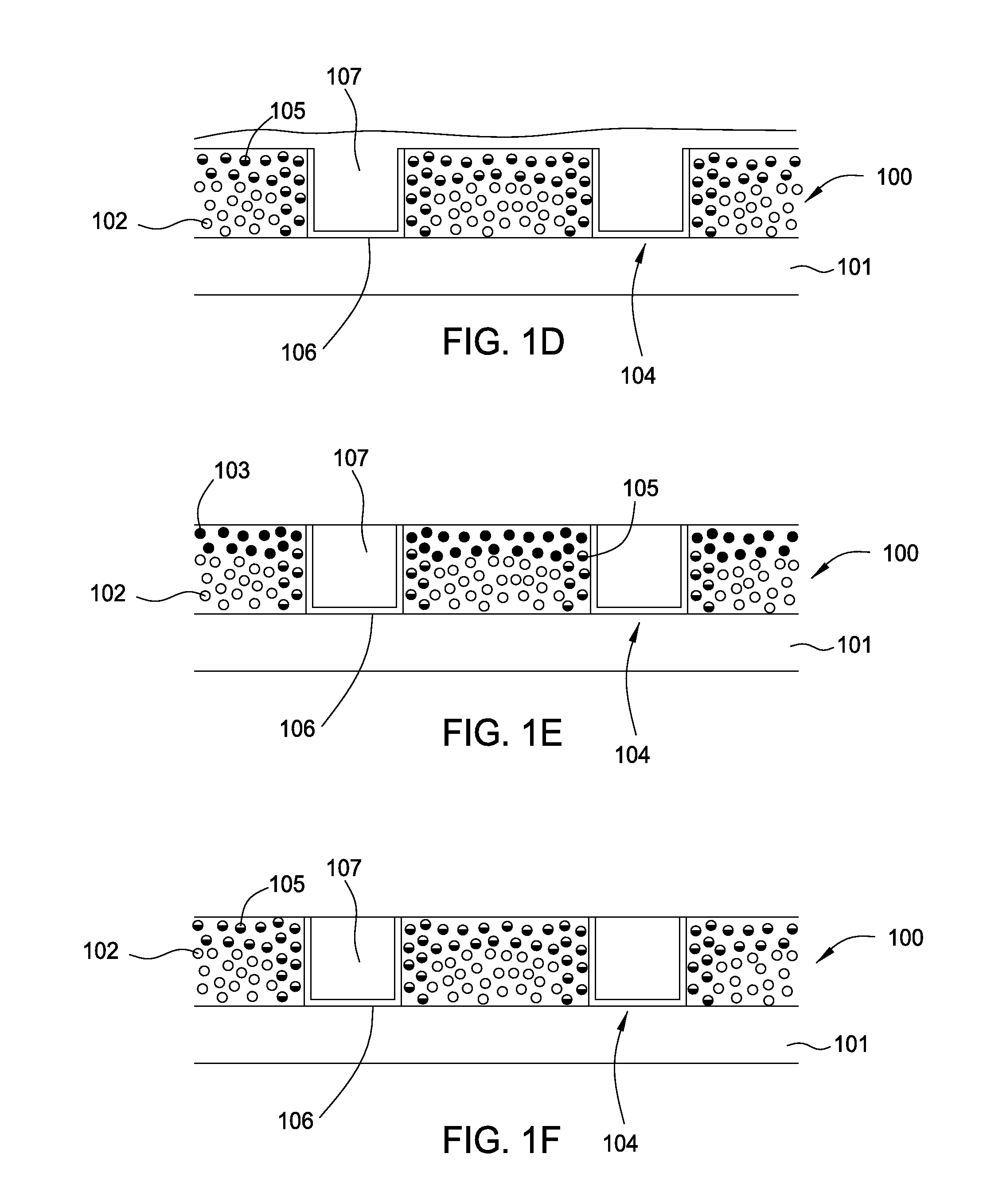Low-k dielectric damage repair by vapor-phase chemical exposure
a low-k dielectric and chemical exposure technology, applied in the direction of chemical vapor deposition coating, coating, coating process, etc., can solve the problems of reducing the resistive capacitance and reliability of the dielectric film, and affecting the performance of the film
- Summary
- Abstract
- Description
- Claims
- Application Information
AI Technical Summary
Benefits of technology
Problems solved by technology
Method used
Image
Examples
example 1
[0074]Direct Si—H Reduction via Chemical Exposure: a substrate containing a damaged porous CDO film is first placed inside a chamber. The chamber is then evacuated with the use of a vacuum pump. Following evacuation, trimethylvinylsilane (TMVS, CH2═CH—SiMe3) is introduced into the chamber. The Si—H moiety reacts with TMVS to form S1—CH2—CH2—SiMe3. An inert gas can be introduced at the same time. The process pressure can be at or lower than atmospheric pressure. The substrate temperature can be at room temperature or higher. Ultraviolet (UV) light exposure can be employed to assist / accelerate the reaction. The substrate is eventually removed from the chamber after exposure, possessing fewer Si—H bonds than it was before entering the chamber. Olefins, vinylsilanes, acetyl acetone, vinyl acetate, styrene, and acrylamide are known to react with Si—H, Chemicals in these families and derivatives thereof can be used in lieu of TMVS.
example 2
[0075]Indirect Si—H Reduction via Oxidation and Silylation: A substrate containing a damaged porous CDO film is first placed inside a chamber. The chamber is then evacuated with the use of a vacuum pump. Following evacuation, oxygen, nitrous oxide, ozone, or a mixture thereof is introduced into the chamber to effect oxidation of Si—H to form Si—OH. An inert gas can be introduced at the same time. The process pressure can be at or lower than atmospheric pressure. The substrate temperature can be at room temperature or higher. Ultraviolet (UV) light exposure can be employed to assist / accelerate the reaction. After oxidation, the substrate possesses fewer Si—H bonds and more Si—OH bonds than it did before entering the chamber. Silylation, a second step, is to follow oxidation. In this step, CTMS is introduced into the chamber to react with Si—OH to form Si—O—SiMe3. An inert gas can be introduced at the same time. The process pressure can be at or lower than atmospheric pressure. The su...
example 3
[0076]Simultaneous Si—H and Si—OH Reduction—Technique I: Si—H and Si—OH can be reduced at the same time. A substrate containing a damaged porous CDO film is first placed inside a chamber. The chamber is then evacuated with the use of a vacuum pump. Following evacuation, a mixture of TMVS and CTMS, one possible combination as an example, is introduced into the chamber to reduce both Si—H and Si—OH simultaneously. An inert gas can be introduced at the same time. The process pressure can be at or lower than atmospheric pressure. The substrate temperature can be at room temperature or higher. Ultraviolet (UV) light exposure can be employed to assist / accelerate the reaction. The substrate is eventually removed from the chamber after exposure, possessing fewer Si—H bonds and fewer Si—OH bonds than it was before entering the chamber.
PUM
| Property | Measurement | Unit |
|---|---|---|
| Temperature | aaaaa | aaaaa |
| Temperature | aaaaa | aaaaa |
| Pressure | aaaaa | aaaaa |
Abstract
Description
Claims
Application Information
 Login to View More
Login to View More - R&D
- Intellectual Property
- Life Sciences
- Materials
- Tech Scout
- Unparalleled Data Quality
- Higher Quality Content
- 60% Fewer Hallucinations
Browse by: Latest US Patents, China's latest patents, Technical Efficacy Thesaurus, Application Domain, Technology Topic, Popular Technical Reports.
© 2025 PatSnap. All rights reserved.Legal|Privacy policy|Modern Slavery Act Transparency Statement|Sitemap|About US| Contact US: help@patsnap.com



